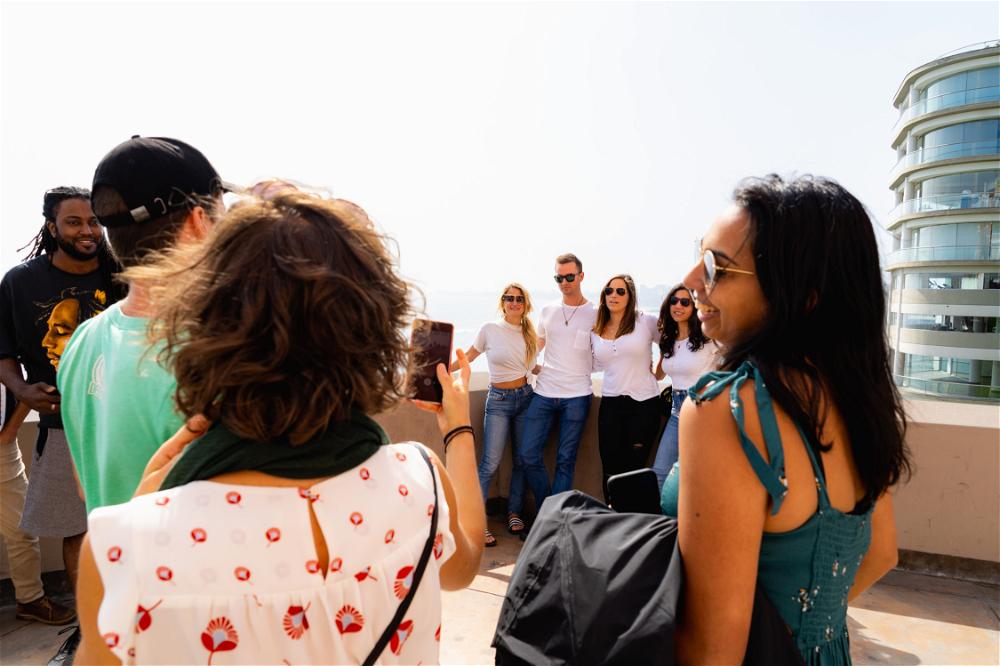7 Best Remote Work and Travel Programs in 2025
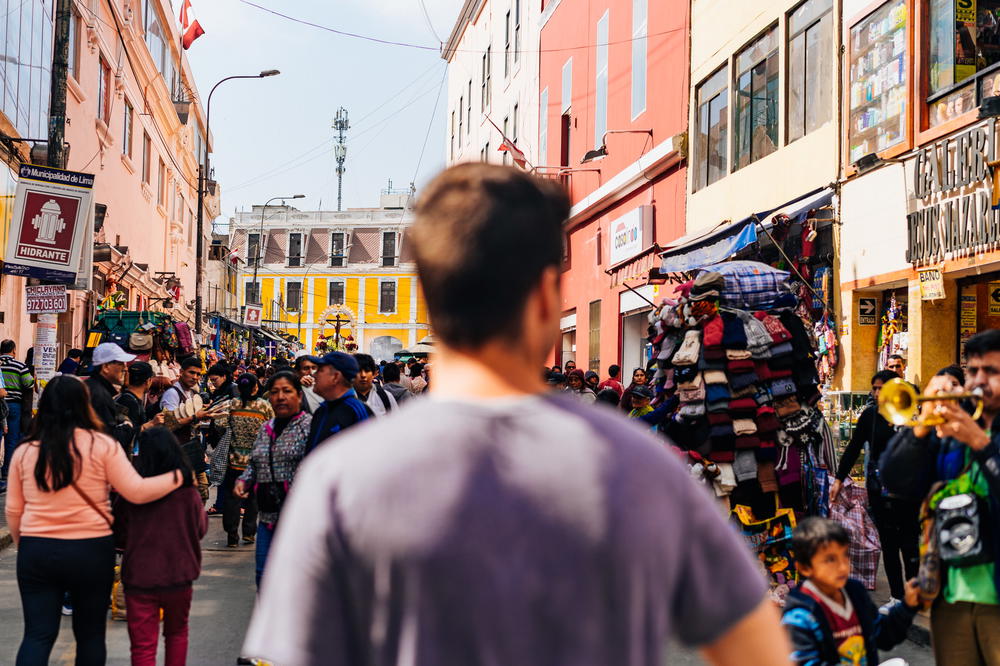
How do you choose the best work and travel program for your preferences and job? In this guide, I compare the top retreats and experiences to help find the right one.
This article may contain affiliate links. We earn a small commission when you purchase via those links — at no extra cost to you. It's only us (Becca & Dan) working on this website, so we value your support! Read our privacy policy and learn more about us.
Table of contents
MinimizeI’ll just be frank: I did a remote work-travel program for 4 months, and Dan did one twice! The first time for him was on the year-long 12-month program, and the second time was on a four-month program with me.
There are lots of remote work and travel programs out there, and some are best for certain types of people.
In this guide, I’ll outline what to know about a lot of the group programs that let you work remotely and see the world. We have friends who have done a whole slew of them, and have given us feedback and told us about their experiences first-hand.
WiFi Tribe
WiFi Tribe has been described by friends of ours as being more basic, but with the details I’m going to share here. The info below is from a friend who has done multiple WiFi Tribe trips.
Here are a few main points about WiFi Tribe, and what sets this remote work group trip program apart.
Main summary
- WiFi Tribe offers the three key elements to working remotely and traveling with a program: a place to work, accommodation and a community of friends (participants).
- WiFi Tribe has less structure, so to speak. The key idea is that the group plans what it wants, organically.
- Community is STRONG: the group functions wholesomely, which is a big positive for a lot of people who choose WT exactly for this reason. For someone worried about the pros and cons of being a digital nomad, WT solves the fear of isolation.
- Autonomy: there are no hard feelings if someone wants to dip in and out, and “do their own thing;” in the same way, anyone is welcome to plan something for the group.
- Participant curation: WiFi Tribe is known to reject 80% or so of applicants, thereby creating groups of people who are vetted for a personality fit — a lot like getting a job!
- Group sizes: Groups in WT are intimate, between 10 and 30 participants in total.
WiFi Tribe’s website currently says, “Our current experiences are designed for people between the ages of 21 and 45. This helps us keep lifestyle expectations aligned. We’re hoping to build out experiences for all ages in the future.” Keep this in mind for if you don’t fall within these limits, or, if you are seeking a program that does not have age restrictions.

Who it’s for
WiFi Tribe is, based on the above parameters, for people who are “really community-oriented” and who want to meet and connect with other professionals while seeing the world.
WT participants have hailed from more than 60 nationalities in the curated communities. There is a big emphasis on sharing values, getting the right “fit” of incredible people in each group and “togetherness.”
I think the WiFi Tribe website, even in its main page, does a great job of spelling out the community’s aims right from the get-go.
Another friend of ours was rejected from joining WiFi Tribe because they did not work enough hours per week, while owning their own business, when they quoted their work schedule in an application. WT rejected this person on the grounds of this person potentially not fitting in with the schedule that the majority of community members have. You can see how the curation works in this way.


Noma Collective
I engaged a bunch with Noma Collective over the years, and spoke to the founders and leaders of the company over a video call once to learn about their Belize retreat. From what I see, NOMA focuses more on “wellness” than other programs, and escaping the walls of a traditional 9-to-5.
Noma Collective’s tagline is, “Bring your job, we’ll bring the world.” The company brings participants the full digital nomad experience by offering accommodations (usually apartments or hotels), coworking environments, daily events and “wellness.”

Included in the fees are things like logistics planning, excursions and events, as well as the community itself.
While I was most interested in joining NOMA’s coworking program in Belize, the company also offers places like Kenya, Guatemala, Portugal, Argentina, Morocco, Spain and Panama under the current offerings.
Key summary of the program
- Structure: Two program leaders plan events during every month and each destination.
- What your program fee gets you: accommodations in each city, a coworking space with WiFi, a SIM or eSIM for cell signal, the “community” and repeating events like Monday lunches (included in the fee), Tuesday potluck dinners, Wednesday Skill Share events, Thursday “meaningful conversation” get-togethers and Thursday “nights out.”
- Weekends: on a HP trip, weekends are free time, when people in the community might plan something like an activity, or group leaders may plan something. Every weekend is different. If the group does something held by an external vendor, there are no up-charges (which are common on RY experiences).
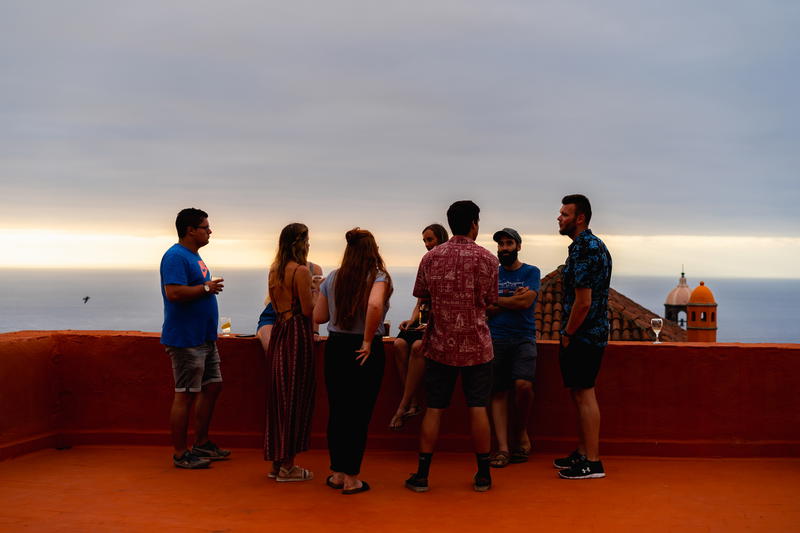
Who it’s best for
Noma Collective programs are best for people who are seeking the structure offered, and personally, I think this is great because I crave structure. I also crave structure when I’m away from my regular routine of home, and looking for exactly that.

A gift from us: Check out Noma Collective and use code HALFHALFTRAVEL150 to get $150 discounted on your Noma Collective program when you enroll.
Hacker Paradise
Hacker Paradise, or HP, was also one of the original work and travel community-based programs that debuted in the mid-2010s with the rise of remote work. This “work from anywhere” attitude is present in the company’s mantra of “Work Hard, Travel Far.”
Update: In late 2024, Hacker Paradise partnered with Noma Collective, creating “Hacker Paradise X Noma” to offer enhanced travel experiences and connect two vibrant remote work communities. This collaboration brings together the best of both programs while maintaining Hacker Paradise’s distinct identity and community.
We also have a friend who did Hacker Paradise several times as a community participant, and I want to share this person’s findings on what makes HP different from WT and RY.
Key summary of the program
- Hacker Paradise offers trips ranging from 2 weeks to 12 months, allowing participants to choose what works best for their schedule and goals.
- What your program fee gets you: Private room accommodations (with cleaning services), coworking space access with WiFi, local SIM card with data, on-site facilitators, professional development events, networking opportunities with locals and the community itself. The program also includes structured weekly events like Monday lunches (included in the fee), Tuesday potluck dinners, Wednesday Skill Share events, Thursday “meaningful conversation” get-togethers and Thursday “nights out.”
- For those who prefer to arrange their own housing, Hacker Paradise offers a “program only” option at a fixed price, giving you access to all the community and professional development aspects without accommodation.
- On a HP trip, weekends are free time, when people in the community might plan something like an activity, or group leaders may plan something. Every weekend is different. If the group does something held by an external vendor, there are no up-charges.
- Recent and upcoming editions have included destinations like Argentina, Belize, Brazil, and other locations around the world. The program continues to expand its offerings through the partnership with Noma Collective.


Who it’s best for
Hacker Paradise is actually not just for computer hackers, as the name sounds. As I looked on the website under their People tab, HP is for people of all professions, like writers, entrepreneurs, developers, artists, researchers, designers and more.
HP is best for people who are seeking the structure offered, and personally, I think this is really great because I crave structure. I also crave structure when I’m away from my regular routine of home, and looking for exactly that: structure.

Outsite
What is Outsite? My friend Jena “did” an Outsite house in Puerto Rico. Outsite is a formalized coliving type of environment, or “program,” you could call it.
What it is
Outsite calls itself, “Beautiful places to stay, designed for remote workers.” This means it is a coliving program, designed for people who want to come live at a house with a community. It was born from a desire to work in beautiful locations around the world.
The company has more than 50 locations worldwide and has more than 5000 members who have participated in the Outsite houses.
The “houses” have local experiences, shared spaces for working, and community initiatives like events with nonprofits in the region.
The “community” is what you get when you become a “Member.” By becoming a member, it doesn’t mean you’re automatically going to live immediately at one of the houses for a period of time; it means you get access to choosing which you’ll go to first, and encourages you to visit and stay at more and more Outsite locations.


Who it’s for
In short, Outsite is for if you want to latch on immediately to a close community in a gorgeous destination far from home. Showing up at an Outsite house, maybe even only for two weeks, is a good amount of time to try traveling and working remotely.
What to know about Outsite is that unlike RY, HP and WT, people go in and out of the location you’re in. This can potentially create a feeling of transience: someone is always leaving, and someone else is always showing up.
This isn’t a group that travels together; rather, it’s you who’s doing the traveling, and meeting different (transient) communities around the world who share Outsite values.
SOJRN
SOJRN is popularizing the idea of “studying abroad as an adult,” which is exactly how I once described Remote Year. SOJRN calls their experiences “chapters,” and mostly focuses on destinations like Italy, Colombia and Bali.
A lot of the SOJRN trips have a theme, like “Spanish in Medellin” or “wine in Tuscany.” Participants will work remotely while staying in a place with a group, and create an unforgettable journey for everyone.
What I like about SOJRN are the missions and values: SOJRN emphasizes “slow travel,” to respectfully engage with new cultures, and positive impact, which means giving back to the communities that the group visits.
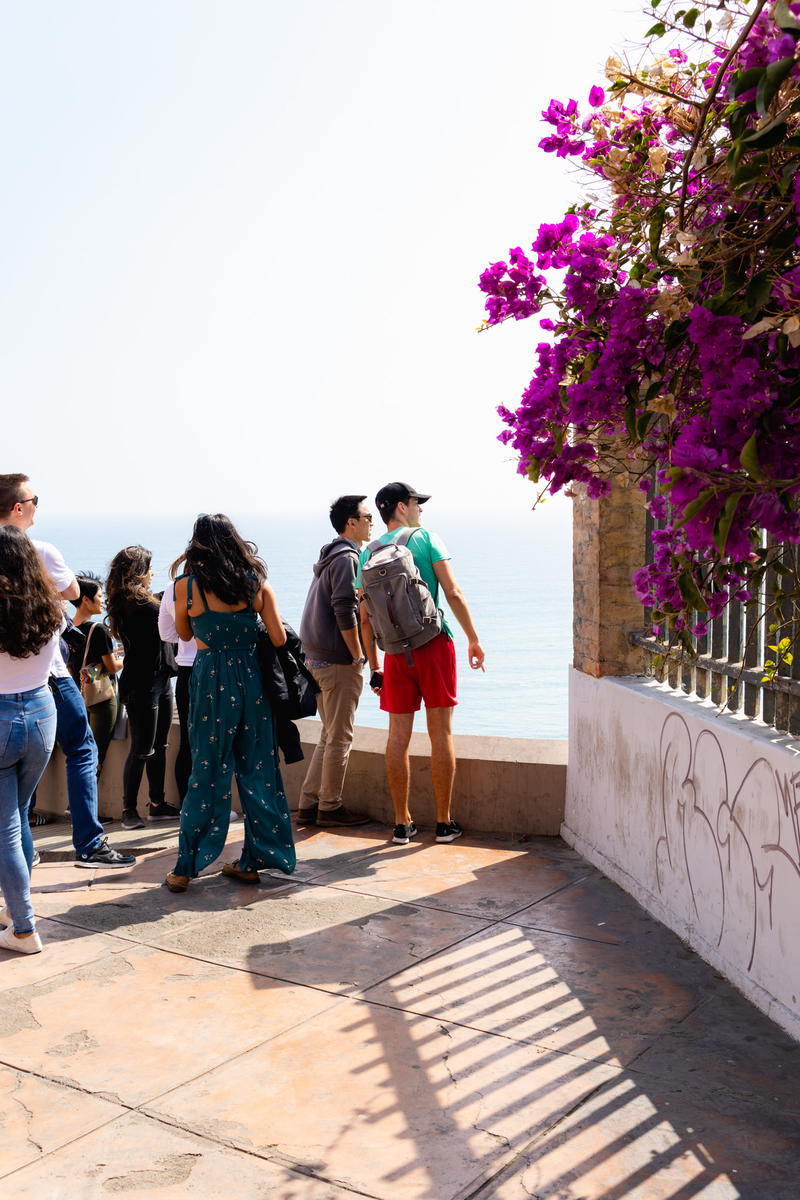
Unsettled
I’ve heard about Unsettled for a few years, and I wanted to know what made this program different. While it’s a younger program than the others, there does seem to be a focus on entrepreneurship and creativity from the get-go, with the company’s intro as, “Unsettled is a global travel community for entrepreneurs, solopreneurs, and creatives who are on a mission to live and work differently.”
Here are some things to know about Unsettled:
- Programs are anywhere from 1 to 4 weeks in places like Greece, Italy, Croatia, Bali and Peru.
- Unsettled has deep and thought-provoking values like fueling inspiration, discovering the world around us, seeking purpose and pushing boundaries.
- Unsettled participants like to ADVENTURE, whether by doing adrenaline-inducing activities or pushing their limits together.
- Participants are mostly in their 30s to 50s, so you can expect a more “mature” crew in any cohort.
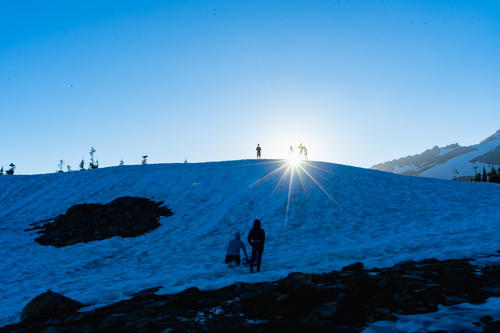

Nomad Train
Nomad Train held the first-ever “longest coworking journey by train” in 2017 when the program began. I think you have to love trains to try out Nomad Train as your work and travel retreat, which makes this type of experience pretty niche.
Nomad Train has (according to the website) had around 100 participants since the company’s maiden voyage. And there are really “out there” locations that these trips explore, like Kazakhstan and Uzbekistan.
I think in summary, Nomad Train is an extreme type of remote work and travel program, and I mean “extreme” in a good way! Most people think of Bali, or Western Europe, for their coworking adventure, but Nomad Train has brought remote workers to Russia and the Trans-Siberian Railroad as a way of taking groups of professionals on big trips.
Figuring out which remote work and travel program is right for you
There are a lot of factors that go into choosing a program, as you can see. I tend to think that what’s most important is the legitimacy of the program or company, and the types of people it attracts.
What I’ve learned by going a remote work and travel program is that it attracts literally all kinds of people, and I think that is true for a lot of these programs. A lot of them also seek diversity, and this is a great thing as you make friends as a digital nomad.
You’ll also want to take the locations into account. Deciding where to work remotely and travel is one of the most paralyzing concepts, and luckily these programs have pre-determined itineraries. That doesn’t mean one size fits all, though, especially if you need to remain in US time zones for your job.
Overall, I suggest asking in forums to hear experiences of people who’ve done the various programs that interest you, and also perusing what’s included, because as you can see above, the programs all differ slightly in terms of what is included among accommodation, travel between cities, coworking and activities or social events.
💻 Leveling up your remote work setup?
We built these resources from years of laptop life on the road. If our remote work tips gave you a boost, a coffee helps us keep testing tools and ideas.
Support our remote work guidesYou may also like
-
![]()
What to Pack for Working Remotely and Traveling (Packing List)
Looking for a packing list for working remotely while traveling? Here are the travel-sized must-haves for having a digital nomad laptop work setup when you’re on a trip.
-
![]()
How to Remove Background Noise from a Work Call
How can you block out unwanted noise from meetings and calls when working at home? A solution like Krisp will block out unnecessary noise so that you can eliminate background noise from video calls and meetings.
-
![]()
How to Convince Your Employer to Allow Remote Work and Travel
Learn proven strategies to convince your boss to let you work remotely and travel. Get actionable tips for negotiating remote work arrangements and making your case successfully.
-
![Woman typing on the keyboard of a small sized Dell XPS laptop while working from home in a home office]()
Why You Need a VPN for Travel in 2025
Do you need a VPN for traveling? How can a VPN benefit you for working remotely and traveling internationally? Here’s how to determine if you need a VPN for your next trip abroad.
-
![]()
Roost Laptop Stand Review: Thoughts After 5+ Years of Use
Do you need a Roost laptop stand? Is the Roost laptop worth it? Here’s why the Roost laptop stand is the best laptop stand for working remotely or working from a home office.
-
![A group of people taking pictures on a rooftop.]()
How to Work from Anywhere with Remote Year
What is Remote Year? It's a work and travel program for people who can work remotely and want to travel the world. Find out how to work remotely and travel with a group.





